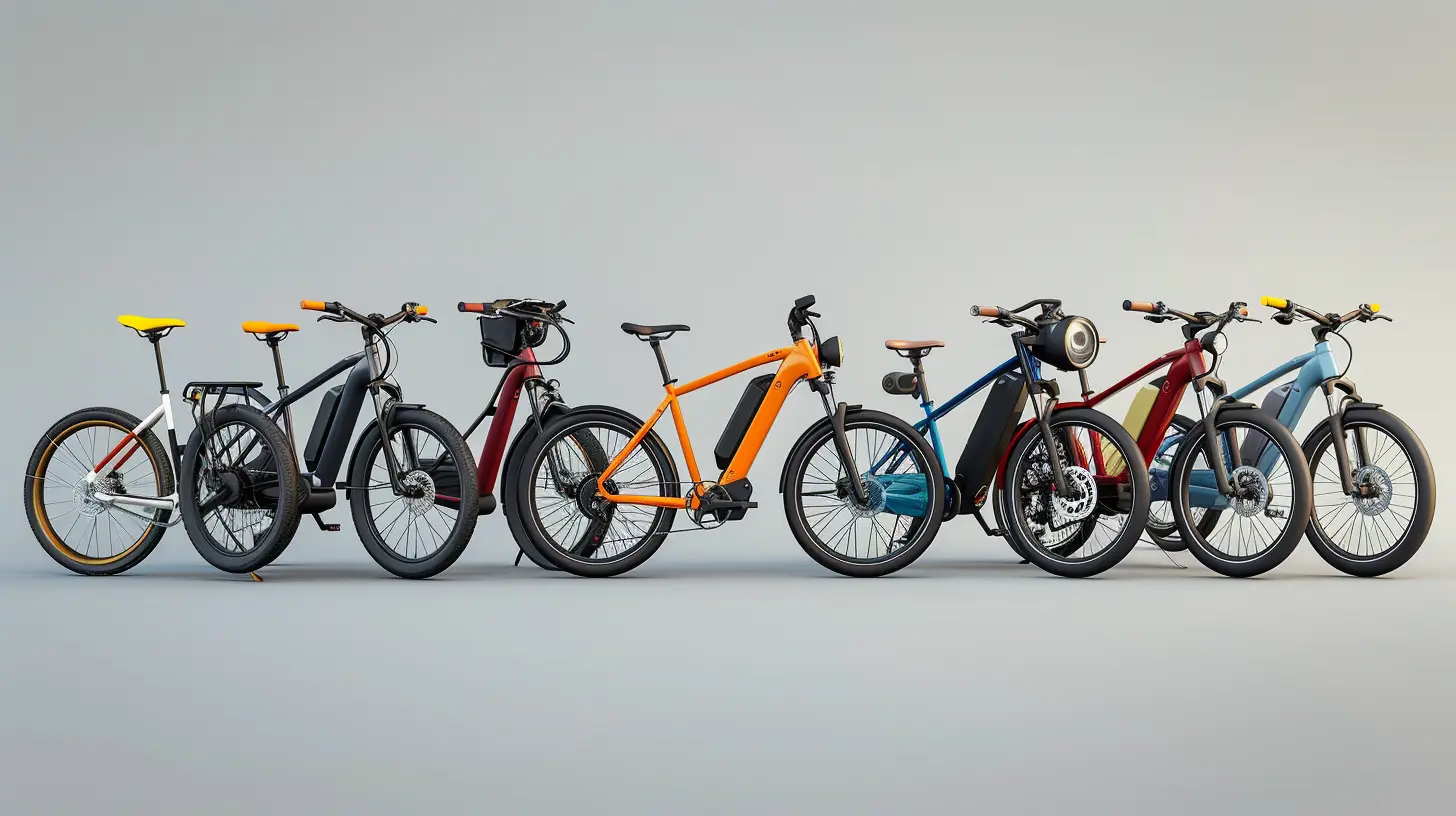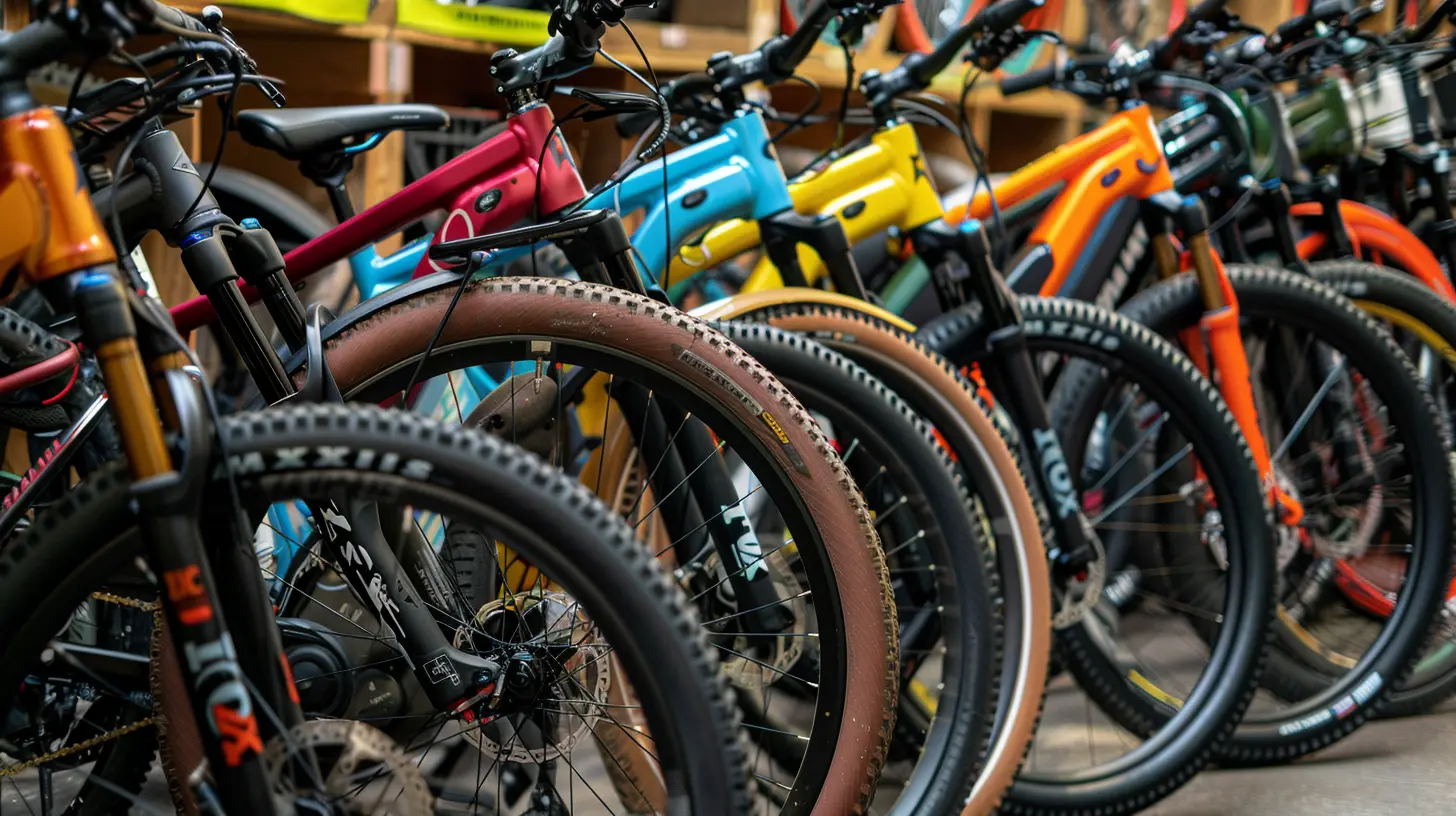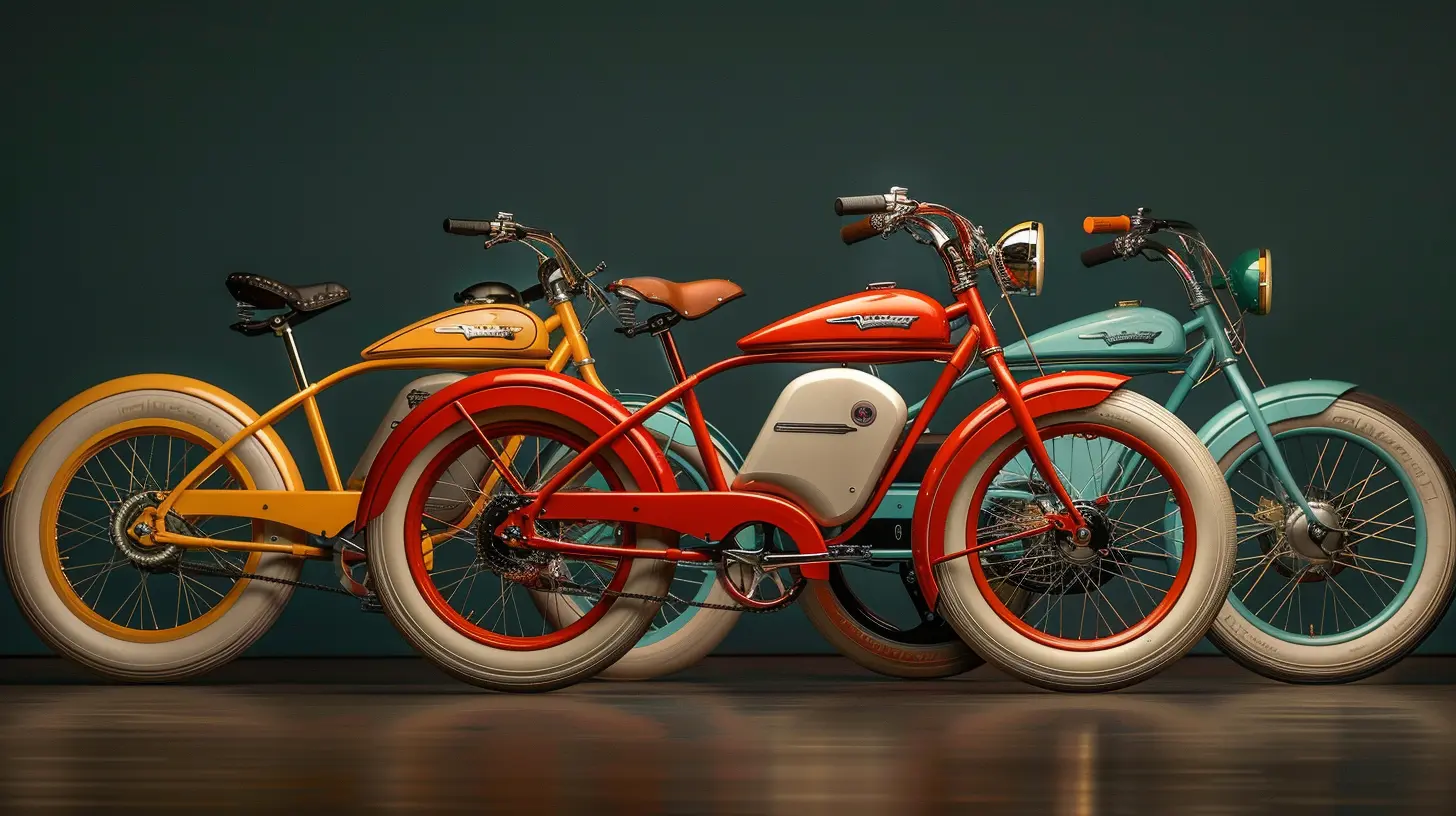Understanding the Different Classes of Electric Bicycles
18 June 2025
Electric bicycles are blowing up in popularity—and it’s easy to see why. Whether you're commuting to work, running errands, or just enjoying a weekend ride, e-bikes offer a fun, eco-friendly, and super efficient way to get around. But here’s where it gets a little tricky: not all electric bikes are the same. In fact, they’re split into different classes, and knowing the difference is key to choosing the right ride and following local laws.
So, what exactly do “classes” mean when we’re talking about electric bikes? And how do they affect your ride, your rights, and your route? Let’s break it all down in this friendly, easy-to-understand guide to the different classes of electric bicycles.
⚡ What Are Electric Bicycle Classes?
Alright, first things first: electric bikes (or e-bikes) aren’t just regular bikes with a motor slapped on. They come with specific rules depending on their top speed, how the motor turns on, and whether or not you have to pedal.To keep things clear and safe, most regions—especially across North America—recognize three main classes of e-bikes:
- Class 1
- Class 2
- Class 3
Each class has its own characteristics, benefits, and legalities. Understanding these is crucial before you buy one or hit your local bike trail.
🚲 Class 1 Electric Bikes
Pedal-Assist Only, Max Speed: 20 MPHLet’s start with the most “bike-like” of them all. Class 1 e-bikes are basically traditional bicycles with a little motorized push. The motor only kicks in when you're pedaling—think of it like a tailwind that never goes away.
✔ How It Works:
- Motor assists only while pedaling- No throttle at all
- Cuts off motor support at 20 miles per hour
🛣 Where You Can Ride:
Class 1 e-bikes are typically allowed anywhere bikes are permitted—bike lanes, trails, paths, you name it. Parks and protected trails often green-light Class 1 because they’re considered the most “human-powered” of the bunch.👍 Pros:
- Great for beginners- Most widely accepted on bike paths
- Provides a natural riding experience
👎 Cons:
- No throttle = can’t rely on motor alone- Capped at 20 MPH may not be fast enough for commuters in a rush
Think of Class 1 e-bikes as the friendly golden retriever of the electric bike world—loyal, predictable, and welcome almost everywhere.
🛵 Class 2 Electric Bikes
Throttle-Assisted, Max Speed: 20 MPHNext up: Class 2 e-bikes. These bikes bring a little extra fun to the mix with a throttle that can zip you along without pedaling. Want to cruise without breaking a sweat or just need a break on a hill? Class 2 has your back.
✔ How It Works:
- Can be powered by throttle alone (like a scooter)- Also has pedal-assist
- Motor cuts out at 20 MPH
🛣 Where You Can Ride:
Here’s where it gets a bit fuzzy. While Class 2 bikes are often allowed in the same spots as Class 1 bikes, some trails and parks may restrict throttle use. Always check the local rules before heading out.👍 Pros:
- Throttle gives you the option to ride without pedaling- Ideal for people with mobility limitations
- Still generally accepted on many bike paths
👎 Cons:
- May be restricted on certain trails- Still limited to 20 MPH
Class 2 e-bikes are like the Swiss Army knife of the e-bike world—versatile, useful in many situations, and just a little more powerful than the basic setup.
🏎 Class 3 Electric Bikes
Pedal-Assist Only, Max Speed: 28 MPHNow we’re cooking with electric fire. Class 3 e-bikes are the fast and furious version—designed for speed demons, serious commuters, and those who like the wind in their face and the road at their feet.
✔ How It Works:
- Pedal-assist only (no throttle)- Motor support up to 28 MPH
- Often comes with a speedometer
🛣 Where You Can Ride:
Not everywhere, unfortunately. Class 3 e-bikes are usually restricted from bike trails, multi-use paths, and parks. They’re mostly street-legal and designed for roads and designated bike lanes.👍 Pros:
- Fast! Great for urban commuting- Better suited for long-distance rides
- Efficient for getting somewhere quickly
👎 Cons:
- Not typically allowed on bike trails or paths- Requires a helmet in many areas
- Some regions may require age restrictions or even registration
Think of Class 3 e-bikes as the sports cars of electric bikes—built for speed, with a little extra responsibility baked in.
🤖 Bonus Round: Beyond the 3 Classes
Okay, so we’ve covered the Big Three. But what about those souped-up fat tire monsters you see online that can go 40+ MPH?Those are generally considered unclassified or off-road e-bikes. Sometimes called "Class 4" (unofficially), these aren’t regulated the same way and often fall into dirt bike or moped territory.
⚠ Risks of Unclassified E-Bikes:
- Not legal on streets or bike paths in many places- Might require licensing, insurance, or registration
- Often not covered under standard e-bike laws
If you’re thinking of going this route, double-check your local DMV regulations. You might be venturing into “motor vehicle” territory.
🧭 How to Choose the Right Class for You
Let’s be real. You probably don’t want to buy an e-bike that gets you ticketed or banned from your favorite trail. So choosing the right class is about balancing performance, legality, and lifestyle.Ask yourself:
- Do I want to ride on trails or just roads?
- How fast do I need to go?
- Am I okay pedaling all the time or do I want a throttle?
- Do local laws allow my chosen class?
If you’re just getting started, a Class 1 might be perfect. More adventurous or have a long commute? Class 3 could be your best bet. Need that throttle to help with assisted mobility? Hello, Class 2.
📜 Laws and Regulations: Why Classes Matter
Here’s something a lot of first-time e-bike buyers overlook: different states—and even cities—have different laws.Some places treat all e-bikes the same. Others have strict rules on which classes can ride where, what gear you need, and even how old riders must be.
Common Legal Points:
- Helmet laws: Often required for Class 3, sometimes for all- Age limits: Class 3 often requires riders to be 16+
- Speed limits on public paths
- Trail and park access restrictions
Before you click “Buy Now” on that snazzy new e-bike, swing by your city’s website and check the rules. Better safe (and legal) than sorry.
🔋 What About Battery and Range?
Regardless of class, battery life plays a major role in the e-bike experience. Higher speeds (like those in Class 3) tend to drain batteries faster. Throttle-only rides (Class 2) also chew through juice quicker than pedal assist.Pro Tips:
- Look for larger capacity batteries (measured in watt-hours, or Wh)- Know your average ride distance
- Carry a spare charger if commuting
Battery size isn’t tied to e-bike class per se, but your riding style will impact how long you can ride before needing a charge.
🧰 Maintenance and Upkeep
Class doesn't just affect how you ride—it affects how you maintain your ride, too.General Maintenance Tips:
- Keep tires inflated (more speed = more stress)- Regularly check brake pads (especially Class 3)
- Clean and lubricate your chain
- Monitor battery health and follow charging best practices
Class 3 bikes, due to their speed and weight, tend to need more frequent maintenance. Think of it like maintaining a sports car versus a cruiser bike.
💬 Final Thoughts
Electric bikes are seriously awesome, but like any tech, the details matter. Choosing the right class of e-bike is about more than power and speed—it’s about how you plan to ride, where you’ll go, and what rules you’ve got to follow.Whether you’re coasting through the neighborhood on a Class 1, throttling up a hill on a Class 2, or racing the morning traffic on a Class 3, there’s an e-bike class out there that’s perfect for your lifestyle.
Just remember: with great electric power comes great responsibility. Know your class, follow the rules, and enjoy the ride.
all images in this post were generated using AI tools
Category:
Electric BicyclesAuthor:

Vincent Hubbard
Discussion
rate this article
2 comments
Astranor Edwards
Electric bicycles: because who needs a gym membership when you can pedal with the power of a caffeinated squirrel?
June 22, 2025 at 12:08 PM

Vincent Hubbard
Great analogy! Electric bicycles offer a fun way to stay active without the gym hassle, making exercise more accessible for everyone.
Raelyn Weber
Embrace the future of mobility! Understanding electric bicycle classes empowers riders to make informed choices, enhancing their journeys while contributing to a sustainable world. Let's pedal together towards innovation and eco-friendly adventures!
June 18, 2025 at 10:21 AM

Vincent Hubbard
Thank you for your insightful comment! Embracing electric bicycle classes indeed empowers riders to choose wisely and promotes a sustainable future. Let's keep pedaling toward innovation together!


